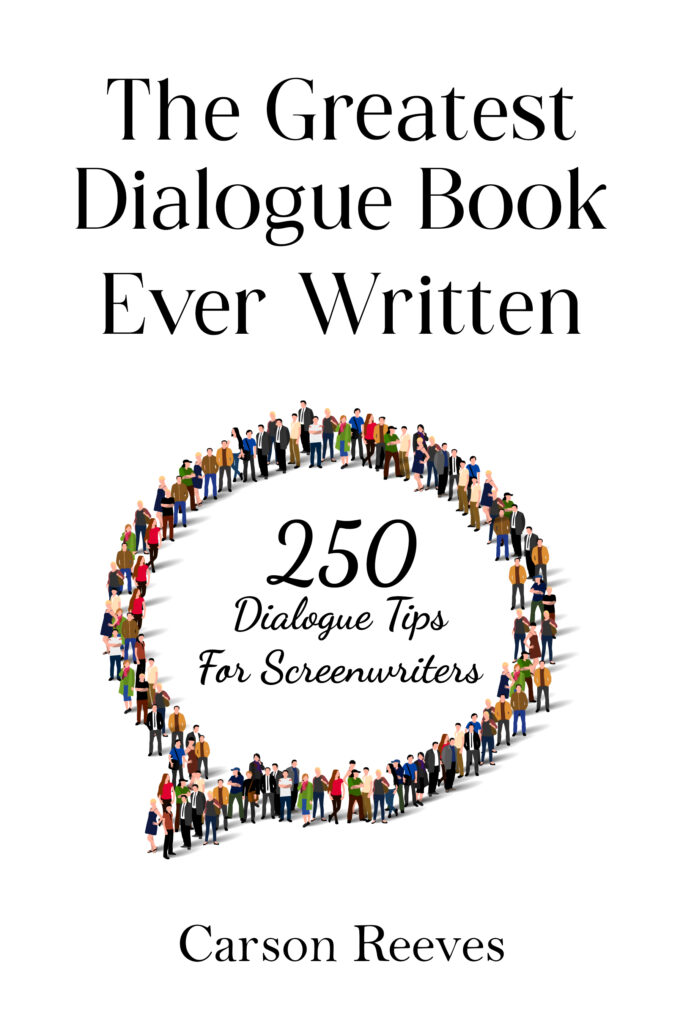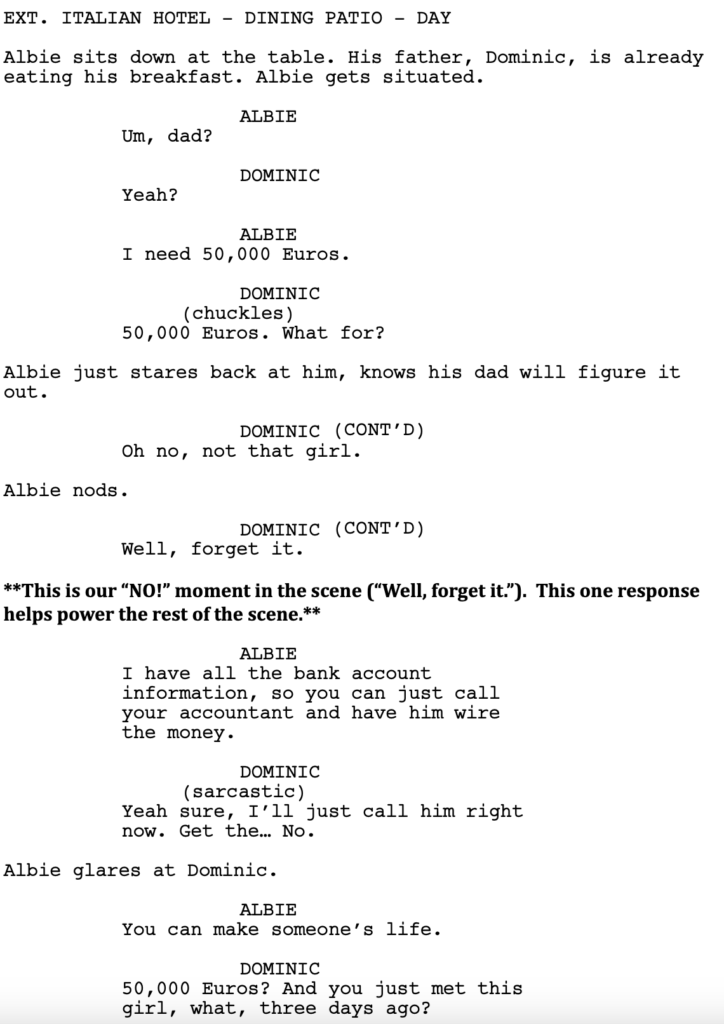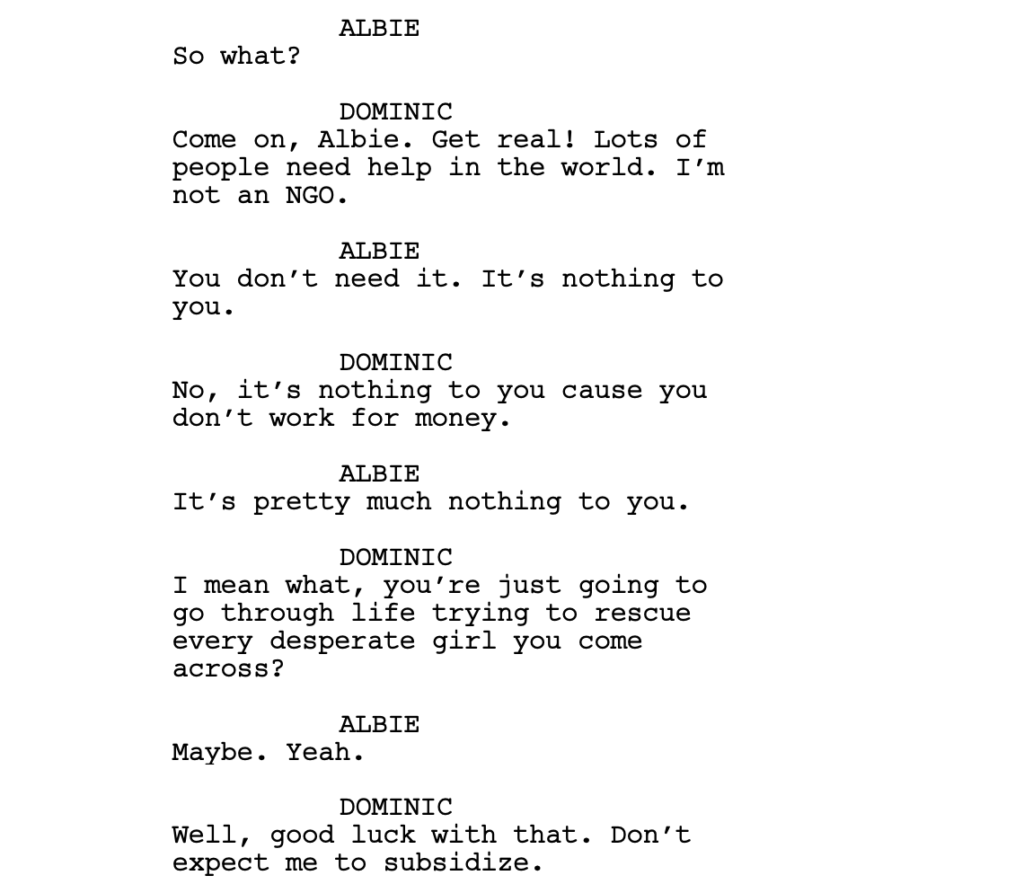An excerpt from my upcoming book, “The Greatest Dialogue Book Ever Written”

There was a time when I didn’t think I was ever going to finish this book. There were too many technical obstacles (mainly regarding how ebooks interpret screenplay-formatted text) that required endless troubleshooting. But I’m SOOO excited that I’m finally about to release the book because I truly believe it will be the seminal book on dialogue for the next 50+ years.
It’s a book with 250 dialogue tips. This in an industry where you’re lucky to find someone who can give you 10 dialogue tips. And I just can’t contain how thrilled I am that I can finally share it with you. I already posted the opening of the book the other week. In today’s post, I’m including a segment from the “Conflict” chapter. This is arguably the most important chapter in the book and it contains 21 tips total.
TIP 121 – Make sure there’s conflict built into the relationship of the two characters who are around each other the most in your movie/show – Who are the two characters who will be around each other the most in your script? You need to build conflict into the DNA of that relationship specifically. That way, almost every scene in your movie is guaranteed to have conflict. John and Jane in Mr. and Mrs. Smith, Tony Stark and Steve Rogers in Civil War, Allie and Noah in The Notebook, Lee and Carter in Rush Hour, Danny and Amy in the Netflix show, “Beef.”
TIP 122 – Using worldviews to create conflict – Okay, but how do you build conflict into the DNA of a relationship? One way is to give characters different worldviews. Have them see the world differently. If you do this, your characters will be at odds with each other for an entire movie as opposed to one or two scenes. In the Avengers movies, Tony Stark’s worldview is he’s willing to get dirty to protect the universe. Steve Rogers’ worldview is governed by honesty. He wants to play by the rules. That difference in their worldviews is why the two butt heads so much.
TIP 123 – Embrace the word “NO” – “No” is the OG conflict word. Without it, most conversations become boring. Let’s say your hero tells his wife, “I’m going to the store,” and she replies, “Okay.” How is that going to result in an interesting conversation? Or your assassin asks his handler, “Is it okay if I skip this assassination? I don’t think it’s safe enough.” And the handler replies, “Sure, no problem.” When people agree with people, the conversation immediately stops. This is why you want to integrate “No” (and all forms of it) into your dialogue. Here’s an example from the HBO show, White Lotus. In it, 23 year old Albie has fallen in love with a local Italian prostitute who owes her pimp money. Albie wants to help pay her pimp off, so he comes to his rich father to ask for money.


TIP 124 – Make them work for their meal – The reason “No” is so great for dialogue is that it forces your character to work for their meal. They don’t get a free pass. The above scene goes on for another three minutes and Albie has to resort to offering something to his father to get the money. That’s what makes the scene entertaining – that he has to work so hard for his meal. And he wouldn’t have had to do it if his dad had said, “Yes.”
The Scriptshadow Dialogue Book will be out within the next two weeks. But there’s a chance it could be out A LOT SOONER. So keep checking the site every day! In the meantime, I do feature script consultations, pilot script consultations, short story consultations, logline consultations. If you’ve written something, I can help you make it better, whether your issues involve dialogue or anything else. Mention this post and I will give you 100 dollars off a feature or pilot set of notes! Carsonreeves1@gmail.com

